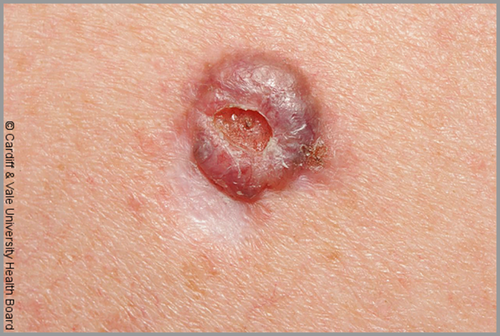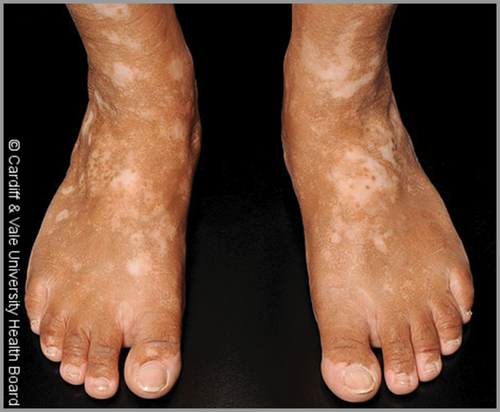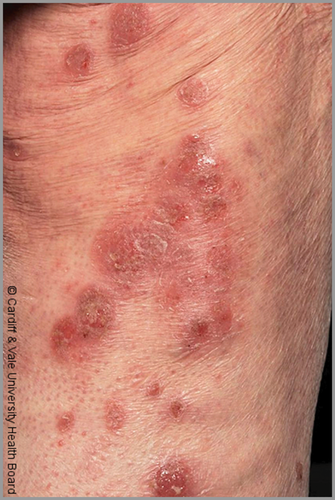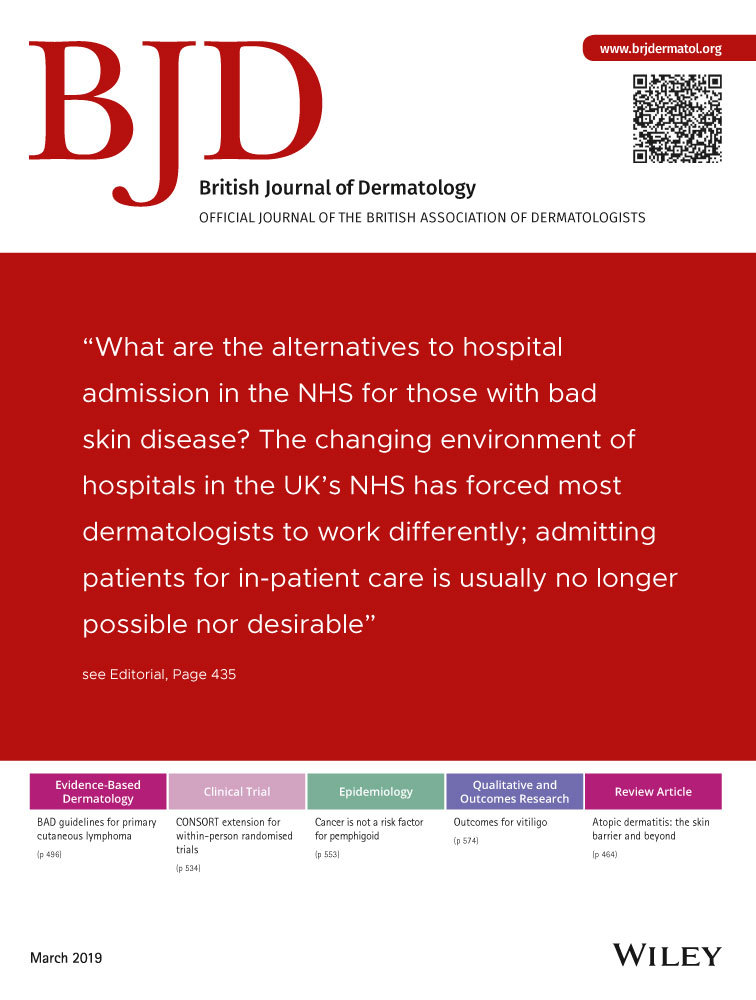Editor's Choice
How useful is optical coherence tomography for diagnosis of basal cell carcinoma? A quantitative review
Reddy and Nguyen present an insightful review on optical coherence tomography (OCT). They explain that OCT is a noninvasive near-infrared imaging technology that can be utilized to diagnose basal cell carcinomas (BCCs) based on specific morphological features. Their aim with this study was to conduct a quantitative review using tumour-level data from published studies in order to assess the in vivo diagnostic accuracy of different OCT systems, and to determine the correlation between OCT features and histopathological diagnosis. They also studied factors that impact on the accuracy of tumour depth estimation. Primary tumour-level data were extracted from published studies on the use of time-domain (TD-OCT), frequency-domain (FD-OCT) and high-definition (HD-OCT) systems for diagnosis of BCCs. Quality assessment was performed using the Newcastle–Ottawa Scale and the Cochrane Risk of Bias Tool. Sensitivity and specificity for diagnosis of BCC, prevalence of morphological features and correlation of tumour depth between OCT and histopathology were analysed. In total 901 BCCs from 31 studies were included. The full results are presented in this issue of the BJD. The authors concluded that OCT is a viable tool for in vivo diagnosis of BCCs. FD-OCT and HD-OCT outperformed TD-OCT in diagnostic accuracy and detection of morphological features, but not in tumour depth estimation.
Reddy N, Bhuyen BT. The utility of optical coherence tomography for diagnosis of basal cell carcinoma: a quantitative review. Br J Dermatol 2019; 180:475–483.
What do Vitiligo Impact Scale-22 scores mean? Studying the clinical interpretation of scores using an anchor-based approach
Gupta and colleagues from the All India Institute of Medical Sciences explain that the Vitiligo Impact Scale (VIS)-22 is a vitiligo-specific quality-of-life instrument. However, its criterion, convergent and known-groups validity, test–retest reliability and responsiveness have been studied previously only in an Indian population. Furthermore, the clinical meaning of VIS-22 scores has not yet been analysed. Their aim for this study was to assign clinical meaning to VIS-22 scores using anchor-based methods. They carried out a cross-sectional study in a large teaching hospital in North India. Patients with vitiligo aged ≥ 16 years (n = 391) completed the VIS-22 and Dermatology Life Quality Index (DLQI) questionnaires, and answered a Global Question (GQ) on the effect of vitiligo on their lives on a five-point Likert scale. Multiple band sets of VIS-22 scores were devised using GQ as the anchor. A weighted kappa-coefficient was calculated to estimate the level of agreement between different band sets of VIS-22 and GQ. VIS-22 and DLQI were compared based on their degree of correlation and agreement with GQ. The mean ± SD of the VIS-22 scores was 24·8 ± 14·0 (range 0–61). VIS-22 scores showed good correlation with GQ (r = 0·76). The full results are reported in this issue of the BJD. The authors concluded that VIS-22 scores can be used to stratify the impairment of vitiligo-related quality of life.
Gupta V, Sreenivas V, Mehta M, Ramam M. What do Vitiligo Impact Scale-22 scores mean? Studying the clinical interpretation of scores using an anchor-based approach. Br J Dermatol 2019; 180:580–585
BAD guidelines for the management of primary cutaneous lymphomas 2018
This set of guidelines was developed using the BAD's recommended methodology and with reference to the Appraisal of Guidelines Research and Evaluation (AGREE II) instrument. The recommendations were developed for implementation in the U.K.'s National Health Service using a process of considered judgement based on the evidence. Targeted literature searches were carried out in the PubMed, MEDLINE and Embase databases and the Cochrane Library, for meta-analyses, randomized and nonrandomized controlled clinical trials, case series, case reports, open studies and cohort studies on primary cutaneous lymphoma and specified treatments to February 2018. A comprehensive evidence-based guideline is presented for this difficult group of conditions. Four figures in the paper summarize treatment guidelines for mycosis fungoides, Sézary syndrome, other cutaneous T-cell lymphomas and cutaneous B-cell lymphoma. See the manuscript for details of the evidence.
Gilson D, Whittaker SJ, Child FJ et al. British Association of Dermatologists and U.K. Cutaneous Lymphoma Group guidelines for the management of primary cutaneous lymphomas 2018. Br J Dermatol 2019; 180:496–526.
Atopic dermatitis, educational attainment and psychological functioning
Smirnova and colleagues from Sweden and the U.K. open this paper by explaining that
atopic dermatitis (AD) might adversely affect academic performance, possibly through influences on psychological functioning such as stress resilience. Their objective in this study was to investigate the association of AD with stress resilience, cognitive function and educational attainment. They used data from a national cohort of men who underwent a military conscription examination at ages 17–20 years in Sweden between 1969 and 1976. All potential conscripts met a physician who assessed current or previous history of AD. Stress resilience was measured by a psychologist using a semistructured interview. The conscription assessment included a written cognitive function test. The highest level of education achieved was identified through record linkage. The study population included 234 715 men, 1673 (0·7%) of whom had a diagnosis of AD. The full results are published in this issue of the BJD. The authors concluded that Swedish men with AD had lower stress resilience in late adolescence but did not have lower cognitive function or poorer educational attainment. The lower stress resilience associated with AD is consistent with an increased risk of possible long-term adverse health outcomes.
Smirnova J, von Kobyletzki L, Lindberg M et al. Atopic dermatitis, educational attainment and psychological functioning: a national cohort study. Br J Dermatol 2019; 180:559–564.







